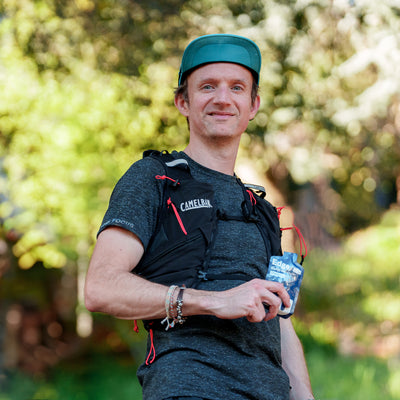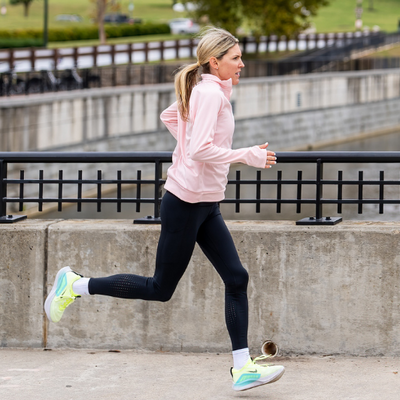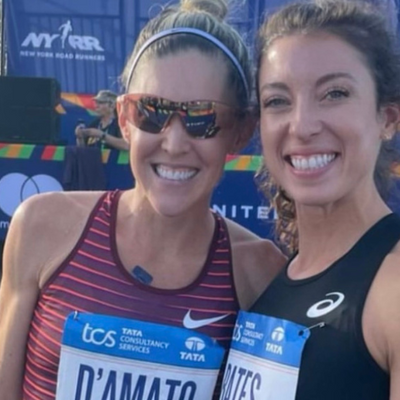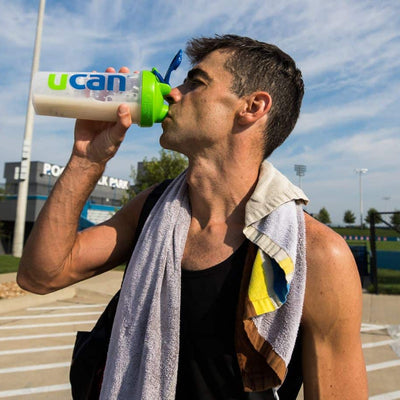By Liz Blaiser Cutting back on carbohydrates can be a smart way to lose body fat, especially simple carbs such as bread, pasta, cookies, and chips that are easy to overeat. But reducing carbs in your diet can also impact your energy levels, since your body relies on burning stored sugar from the carbs you eat for fuel. With fewer carbohydrates on your plate, you’re more likely to feel tired —especially if you’ve upped your exercise routine. Low energy can be an all-too-common challenge when you’re trying to get in optimal shape, but it doesn’t have to be if you game out your eating plan, says Bob Seebohar, Board Certified Specialist in Sports Dietetics and former sports dietitian for US Olympic teams. You can find the right balance that helps you lose weight and stay fueled for long runs, intense CrossFit sessions, or just a jam-packed day.
Cutting Carbs the Healthy Way
There’s no one type of a low-carb diet, but they generally share the same philosophy of eating a diet that’s higher in fat, moderate in protein, and low in carbohydrates. A ketogenic diet is the most extreme version. In a typical keto plan, you get 75 percent or more of your calories from fat, you eat moderate protein, and you limit carbs to less than 50 grams a day (some have you go as low as 20g). That can be daunting, considering that a medium bagel has 56g of carbohydrates, a small bowl of oatmeal contains 27g, and a banana has 27g. Most keto-style programs ban simple carbs like bread and some restrict fruit too. The diet causes your body to go into a state of ketosis after as little as two days. That means that instead of burning carbohydrates for energy, you burn stored fat. This style of eating has been used for years to help treat epilepsy and there’s evidence it may be helpful in managing type 2 diabetes. However, experts like Seebohar warn that it can be too restrictive for the typical active person. That’s why he recommends a classic low-carb, high-fat (LCHF) plan instead. Rather than counting every last gram of carbs, you simply focus on eating a mix of healthy whole foods like lean meats, fish, avocado, olive oil, and whole grains, and limiting simple carbohydrates like bread and pasta. “The carbohydrate restriction is not as intense,” Seebohar says. “A ketogenic diet is very difficult for people to maintain as a lifestyle, but there’s a lot of wiggle room with an LCHF plan.” You can eat a variety of nourishing whole foods—carbs included (everything from beans to raspberries to broccoli are complex carbs). And that means you’re more likely to stick with it. Many people who try a keto program complain of fatigue and may have GI issues. Called “the keto flu,” this is your body’s reaction to not having carbs to burn and needing to switch over to burning fat. If you’re athletic, your body needs to learn how to utilize fat more efficiently because carbohydrates have been your primary energy source, says Seebohar. Keto can also lead to nutritional deficiencies, not only the B vitamins but also magnesium (found in beans, seeds, and whole grains) and vitamin C (in many fruits and vegetables, from strawberries to potatoes). If you’re wiped out, be sure to check in with your doctor, who can run blood tests to check for specific deficiencies.The Importance of Eating Fat
If you’re feeling exhausted, you’re probably not eating enough fat. “A lot of people drop their carbs but they don’t increase their fat,” says Seebohar. “When you restrict one nutrient and don’t increase another nutrient, you’ll have lower energy because you're going into caloric restriction now.” Fat is also essential for creating energy. “The human body is designed to use fat,” explains Mark Cucuzzella, M.D., a professor at the West Virginia University Center for Diabetes and Metabolic Health and author of Run for Your Life. Fat gives you access to a steady stream of energy without causing your blood sugar to spike. It might be hard to put aside the traditional notion that eating fat makes you fat, but you burn more fat when you’re also cutting carbs. A study in Metabolism compared two groups of ultra-endurance runners—one eating a high carb diet and one on a low carb plan—and found that fat-burning capacity was higher in the low-carb group. There’s also some evidence eating a LCHF diet will cause your body to change over to burning fat as its primary fuel source just like a keto diet. The younger and healthier you are, the quicker your body will adapt—the switch can start within four weeks, says Dr. Cucuzzella. You’re already ahead of the game if you’ve been working out and going easy on simple carbs; that combination encourages your body's ability to use fat for fuel.How to Choose the Right Fats
Prioritize healthy unsaturated fats: monounsaturated fats, like olive oil and avocado, and polyunsaturated fats, such as soybean oil, walnuts, and tofu. Since nuts, seeds, and avocados also contain carbohydrates, many people trying to eat low-carb focus on adding oils to their diet. However, your body still needs some saturated fat from a chicken thigh, a glass of milk, or even a pat of butter. “People think saturated fats are very bad, but our body actually needs saturated fat too,” says Seebohar. We’ve heard for years that we need to cut saturated fat to reduce heart disease risk, but there’s evidence that going on a high-fat, low-carb diet that includes saturated fat sources like meat and cheese won’t increase your “bad” LDL cholesterol and may even improve your “good” HDL cholesterol level.Extra Fuel for Endurance and High-Intensity Workouts
If you’re training for a half marathon or marathon and your pace and intensity is fairly low, Seebohar says you shouldn’t notice an energy slump on an LCHF plan. “You can get into trouble if you turn up the intensity,” Seebohar adds. “Your body starts to realize it needs more carbohydrates and you're not going to have as many carbohydrates stores.” That’s when a low-glycemic carb such as UCAN’s LIVSTEADY can be key. “It metabolizes very differently in the body than other carbs and does not create a spike in blood sugar,” says Seebohar. It is made with a non-GMO cornstarch molecule that’s heated with water, which changes its molecular structure and allows it to be absorbed gradually. “If you’re doing a three-hour bike ride or a marathon,” Dr. Cucuzzella says, “you want to get some glucose at a slow release without shutting off fat burning.” Sugary sports drinks, on the other hand, won’t give you the steady energy you need. “They rush carbohydrates in your body very quickly,” says Seebohar, and that leads to blood sugar spikes and dips. The goal of a low carb diet is to minimize spikes in blood sugar and insulin, but that doesn’t necessarily equate to sustained energy during exercise. UCAN products with LIVSTEADY achieve the primary goal of a low carb diet, keeping insulin low, while delivering a steady-release of glucose for long-lasting energy. “UCAN fits beautifully because it does give you that carbohydrate source slower burning versus a kind of a fast burning high blood sugar, high spiking sugar,” says Seebohar. It’s the smart choice for someone who’s following LCHF and is active. You also need electrolytes and essential minerals—especially when you’re working out in summer—to balance your fluids, Dr. Cucuzzella says. Instead of a traditional sports drink with electrolytes + sugar, a better option is a no-carb electrolyte drink like UCAN Hydrate, which delivers essential electrolytes without the sugar rush. While H20 is important for day-to-day hydration, it won’t provide you with everything your body needs when you’re exercising hard.The Power of Post-Workout Snacks
This is the time to focus on protein—especially if you did a strength workout. “You need protein to recover and to maintain your muscle mass,” says Dr. Cucuzzella. Here are a few helpful post-workout tips:- Good snack choices include almond butter, Greek yogurt, edamame, cheese, and UCAN’s Energy Bars. Or consider using a protein powder like UCAN’s Energy+ Protein Powder before or after a strength workout.
- Keep in mind that it’s also important to include protein in your regular meals too. Think fish, lean meat, soy, cheese, and eggs.
- Don’t forget to include healthy fats and plenty of vegetables (perhaps a spinach and avocado omelet or a salad with shrimp dressed with olive oil).








